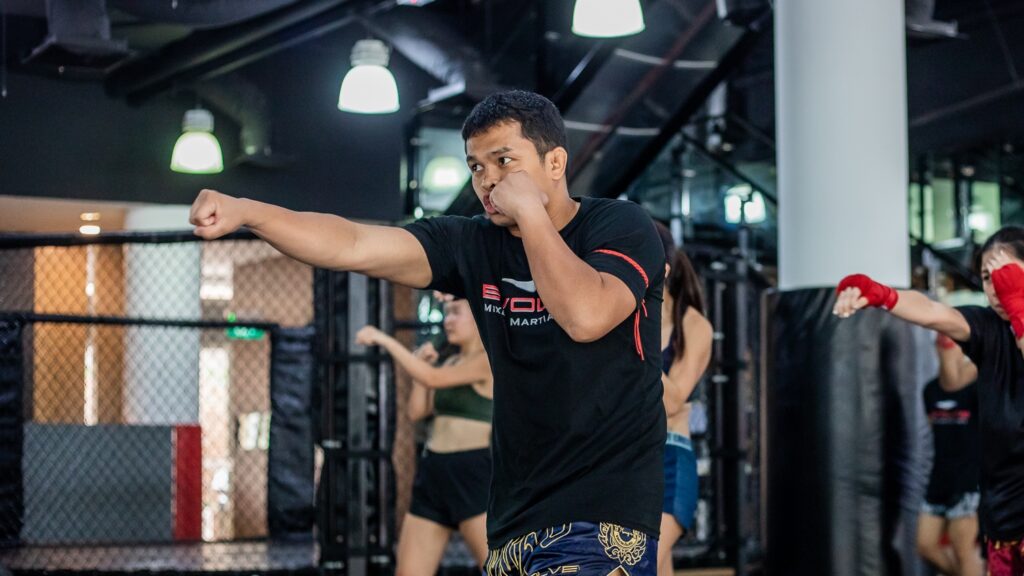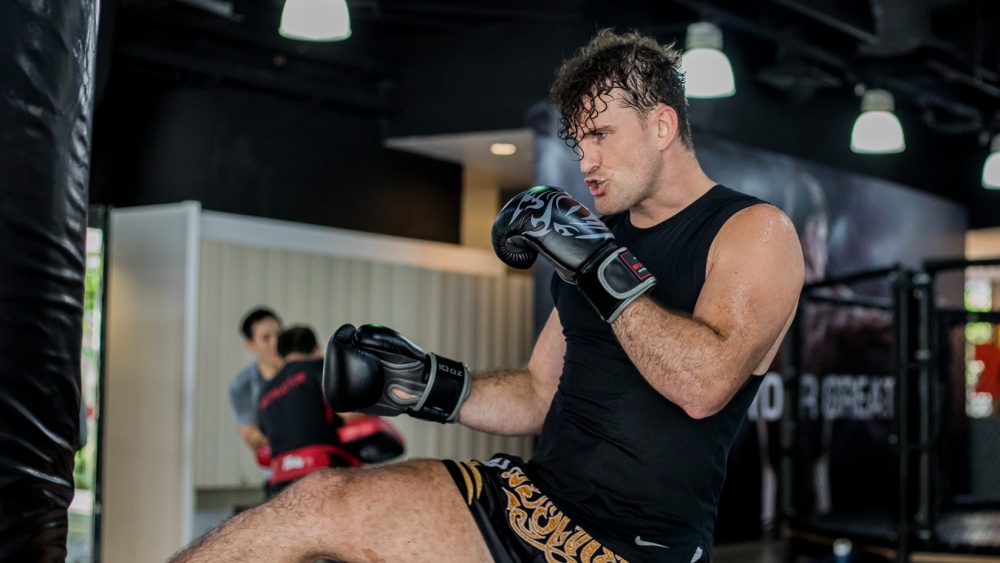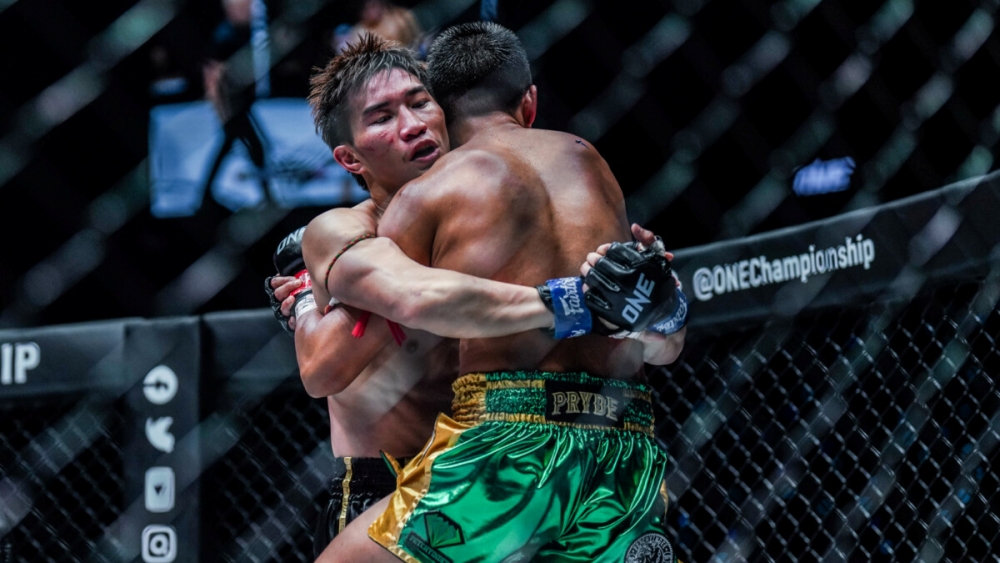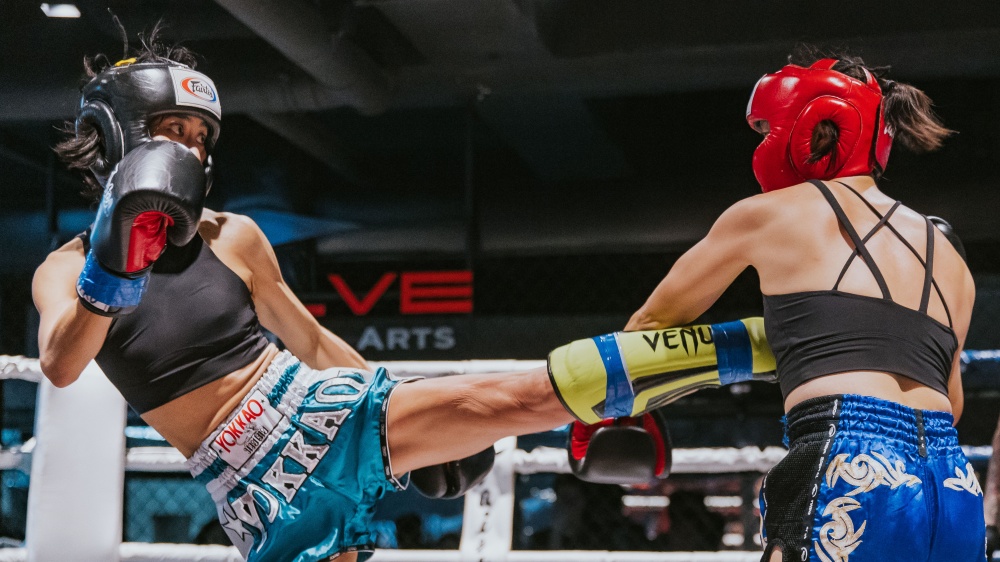A pre-workout routine that prepares your body for strenuous physical activity allows you to get more out of your Muay Thai training. Warming up before any rigorous exercise gets the blood pumping through your veins and loosens up your muscles.
About five to fifteen minutes of warming up are enough to prepare your body for Muay Thai training. A warm-up does more than simply prepare your body for more intense physical activity. It makes you more focused during training sessions and prepares your mind for more rigorous exercise.
Effective Warm-Ups And Stretches For Muay Thai
The traditional way of warming up for Muay Thai classes involves performing a few stretches and jumping rope for a few minutes. While that warms up your body to an extent, it leaves too many stones unturned. There are more effective ways to prepare your body for the rigors of Muay Thai training.
An ideal warm-up involves much more than simply performing cardio and getting inside the ring. A good warm-up routine should activate your muscles, loosen up your joints, raise your body temperature, and come close to the intensity of your main workout at some points.
Gradually increasing the intensity of physical activities allows your body to adjust to the training environment, improving the effectiveness of your training sessions. Muay Thai fighters usually perform better physically and mentally after completing comprehensive warm-ups.
Some of the things you should keep in mind when crafting a warm-up routine include:
- Raising Your Core Temperature And Mobilizing Your Joints: This part of your pre-workout routine should aim to raise your body temperature and loosen up your joints. You can do this with low-intensity exercises like jogging or cycling.
- Activating Your Muscles: This portion of your warm-up involves using the muscles that are engaged when performing Muay Thai-specific movements like clinching, striking, and stabilization. Exercises like single leg kick outs and cork-screw push-ups target many of the core and shoulder muscles used in clinch fighting.
- Waking Up Your Neuromuscular System: This is the high-intensity portion of your warm-up that prepares your nervous system for training sessions. You need to generate power with your limbs when training and react to movements your training partners make when performing pad work or sparring. Plyometric exercises like the plyo pogo jumps are effective ways to wake up your neuromuscular system.
Your warm-ups should consist of five-minute phases. The first phase should include performing exercises for about 20 seconds, while the second phase involves getting eight to fifteen reps of each exercise. The third phase can be a set of plyometric pogo jumps or other sport-specific exercises. The entire warm-up should last about 15 minutes, and you should be a little sweaty afterward.
Feel free to add any exercises you like to your warm-up routine. Just follow the format listed above so your body is fully prepared for the rigors of training. Warm up consistently throughout your training week, and you’ll see improvements in your mental and physical readiness during your Muay Thai classes.
Warm Up For Muay Thai With These Exercises
Ready to find out which exercises work best as warm-ups for Muay Thai? Let’s jump right into your list:
1) Jogging
Jogging is one of the oldest warm-ups used in Muay Thai, and it’s an effective way to increase your body temperature before your Muay Thai training session. Keep your jogging sessions to about five minutes or less to avoid tiring yourself out before you start training.
You don’t need to get into a full run if you’re just warming up; jog at a moderate pace instead. You should be able to hold a conversation while jogging. If you’re getting out of breath, slow down a bit.
2) Skipping
Jump rope is another popular warm-up method with Muay Thai fighters. Skipping also gets your blood pumping like jogging, but it also engages the same shoulder muscles that are activated when you throw a punch. Skipping also requires timing and reacting to the rope when it gets close to your feet, activating your neuromuscular system for Muay Thai.
As is the case with jogging, keep your skipping exercises to less than five minutes to avoid tiring yourself out. You can skip some more after your Muay Thai training session as a cool-down.
3) Hip Circles
Once you’ve raised your core body temperature, it’s time to add some dynamic stretches like hip circles. This stretch helps to loosen your hip and lower back muscles. It also wakes the deep muscles in your waist and strengthens your core. It’s an effective way to remove body tension and improve flexibility.
Muay Thai requires hip flexion and extension to execute many kicking techniques. Warming up your hips with exercises like hip circles will prepare your hips for throwing kicks.
To perform hip circles:
- Stand upright with your feet slightly more than shoulder-width apart and your knees slightly bent.
- Place your hands on your hips and slowly begin to rotate them, making big circles.
- Complete a set of circles going in one direction, then switch to the opposite direction.
Keep your entire body relaxed when performing hip circles, and keep a steady rhythm. Start the exercise with small circles and gradually increase their diameter over time. Try to keep your hips level with the floor when performing hip circles.
4) Arm Circles
This is one of the most straightforward exercises you can perform as a warm-up, yet it’s an effective way to get your blood flowing and activate your biceps, shoulders, and triceps muscles. You don’t need any equipment to perform arm circles; they can be done anywhere you have enough space to move your arms freely.
To perform arm circles:
- Stand with your feet about shoulder-width apart and your arms extended in front of you. They should be parallel to the ground.
- Circle your arms forward with small, controlled movements, gradually increasing the diameter of the circle until you can feel a nice stretch in your triceps.
- Reverse the direction of the circle after 20 to 30 seconds.
5) Knee Circles
Poor rotation in your knee can hinder movements around your hip and ankles. It can also lead to pain in these areas and the lower back. Your knees also rotate a bit when you throw Muay Thai techniques like a roundhouse kick, so warm up your knees before your training sessions to train optimally.
Here’s what the exercise looks like:
- Start with both feet together and slightly bend your knees. Separate your knees as far out as possible as you circle your knees until they straighten out.
- Keep your feet planted on the ground when performing this exercise to emphasize internal rotation.
You can target internal knee rotation once you’re done with a set. All you need to do is separate your feet and flex your knees to focus on internal rotation while circling your knees.
6) High Knees
High knees are a dynamic stretch that also provides cardio when done quickly. The exercise strengthens muscles in your legs, improves your flexibility and coordination, engages your core, and elevates your heart rate.
High knees are one of the most popular dynamic stretches used by athletes, from soccer players to Muay Thai fighters. It prepares your body for all the kicks you’ll throw during your training session.
Here’s what the exercise looks like:
- Stand upright with your feet hip-width apart and left one of your knees as high as you can.
- Bring the leg back down and raise your other knee as high as you can.
- Keep alternating the movement as if you were running in place. Perform the exercise for at least a minute to loosen up your legs. Keep your core tight and your spine neutral when performing the exercise to get the most out of it.
7) Torso Twist
Here’s a great way to loosen up muscles in your torso, like your obliques and abdomen. It also helps to improve flexibility and mobility in your spine. To perform the exercise:
- Start with your feet shoulder-width apart and facing forward. Keep your arms by your sides.
- Bend your arms so your upper and lower arms form a 90-degree angle. Twist your torso from side to side as if you were drilling straight punches.
8) Walking Lunges
This exercise is a variation of conventional lunges. Instead of returning to an upright position after each lunge, you walk forward by lunging with your other leg. Walking lunges help strengthen the glutes, hips, legs, and core muscles. You can also make the exercise more challenging by adding a torso twist or holding weights in each hand.
Here’s what the exercise looks like:
- Stand up straight with your feet shoulder-width apart. Keep your arms on your hips or by your sides.
- Step your right leg forward with your weight on your heel. Bend your right knee to lower yourself until your thigh is parallel to the floor in the lunge position.
- Pause for a second and repeat the movement with your left leg while keeping your right leg still.
- Keep alternating between your legs, walking forward as you lunge. Aim for about 10 to 15 steps with each leg to get the blood flowing to your legs.
9) Leg Swings
Leg swings are a dynamic exercise that prepares your legs and hip flexors for many of the movements used in Muay Thai. Add these to your warm-up sessions to improve your mobility and flexibility, making your Muay Thai techniques cleaner.
Your hip is a complex structure that consists of many ligaments, bones, and muscles. Activities like sitting down for prolonged periods can tighten your hip flexors over time, reducing your hip mobility. Exercises like leg swings engage the muscles and ligaments in your hip, improving stability and function.
You need lots of hip mobility to reach your full potential in Muay Thai, so make sure exercises that loosen up your hips, like leg swings, are incorporated into your warm-ups and other workouts.
Here’s how to perform a leg swing:
- Stand on one leg to start the exercise. You can hold on to a sturdy object like a rack to keep yourself balanced if necessary.
- Swing your other leg in front of you and behind you slowly. Your leg should look like a pendulum going back and forth.
- Swing one leg for 30 to 60 seconds and switch legs.
10) Shadowboxing
Shadowboxing is another effective way to warm up for your Muay Thai training sessions. Start with slow movements and gradually build up your speed until you’re throwing strikes as fast as possible. Use every tool in your Muay Thai arsenal when shadowboxing, and imagine you have a real opponent in front of you.
Use your feet to close distance on your imaginary, unleash combinations, and evade their imaginary attacks. Shadowboxing for about five minutes to raise your heart rate and loosen your muscles for your more rigorous training session.
Besides being an excellent warm-up for your Muay Thai training, shadowboxing is also an effective way to sharpen your technique and improve your footwork. It should be part of your warm-ups and general training routine. It also works well as a cool-down after a hard training session.
11) Push-Ups
Push-ups are the most effective bodyweight exercise for your upper body. Tested and proven over millennia, push-ups are part of any respectable training program. From military academies to Muay Thai gyms, this is one of the most effective ways to increase strength and muscle endurance in your upper body.
Push-ups are also a great warm-up for your Muay Thai training sessions since it’s a compound exercise. It engages muscles like your shoulders, chest, and triceps. These muscles are also activated when you throw punches or elbows.
Here’s what the exercise looks like:
- Get into a high plank position with your hands aligned with your shoulders.
- Lower yourself to the floor by bending by the elbow. Pause briefly and push yourself back to the starting position by pushing on the ground and straightening your arms. Avoid locking your arms fully after your rep.
- Aim for about five to ten reps when using push-ups as a warm-up. You don’t want to do enough to burn out your muscles before your training starts.
12) Squats
Squats are a bodyweight exercise that targets virtually all the muscles in your legs. It’s an effective way to prepare your legs for the rigors of Muay Thai. Here’s what it looks like:
- Stand upright with your feet slightly more than hip-width apart. Keep your back straight and look ahead.
- Lower yourself by pushing your hips back until your thighs are parallel to the ground.
- Push yourself back to the starting position to complete a rep. Aim for five to ten reps to get your blood flowing.
You may also like:



















